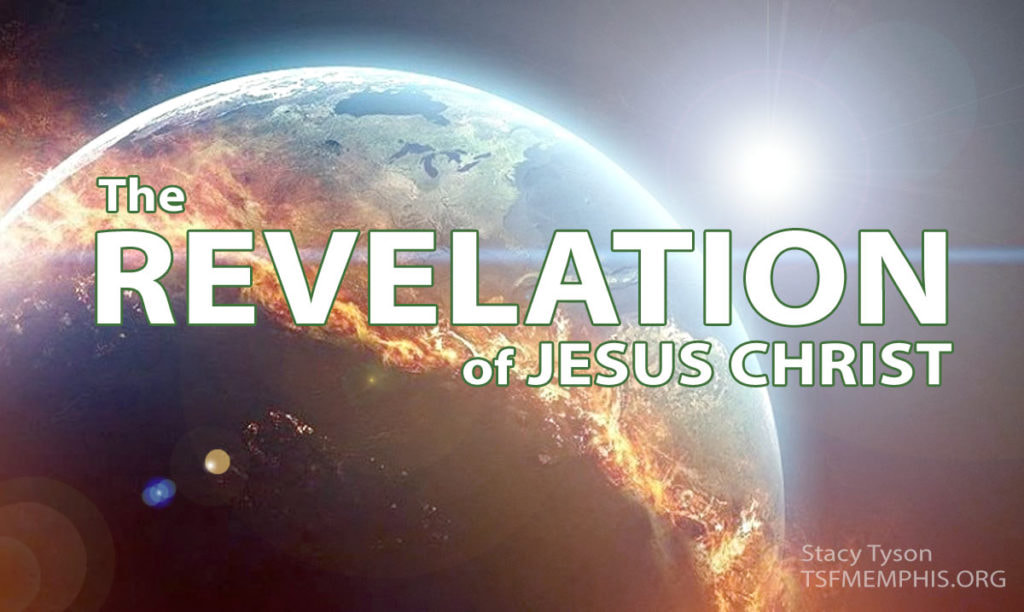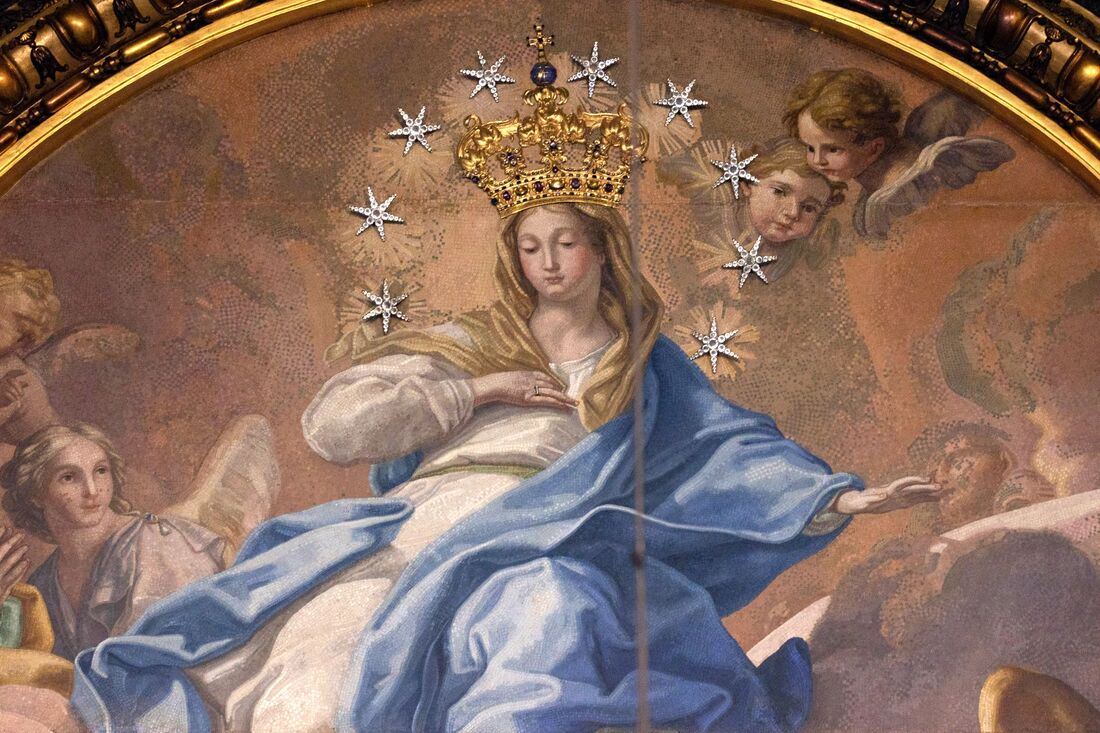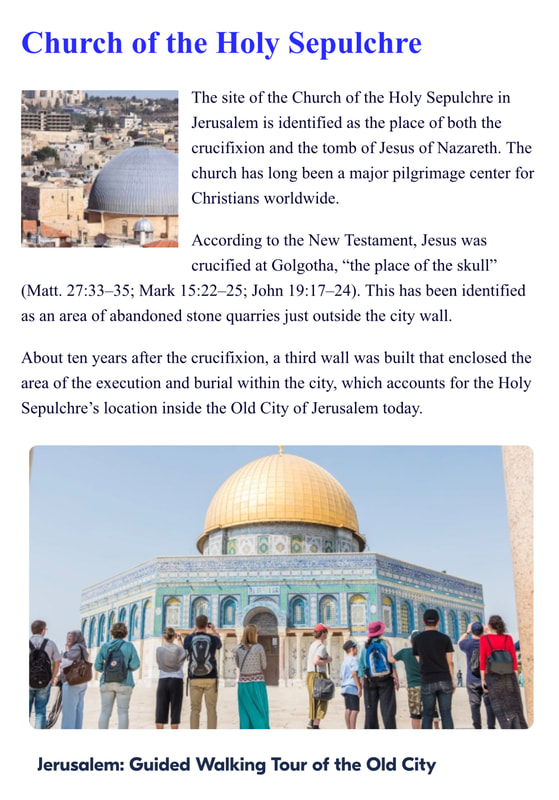What Is the Meaning
of
Shekinah Glory?
Shekinah Glory is a visible manifestation of God on earth,
whose presence is portrayed through a natural occurrence. The word shekinah is a Hebrew name meaning “dwelling” or “one who dwells.”
Shekinah Glory
means “He caused to dwell,” referring to the
divine presence of God.
First, God had given Moses and Aaron specific instructions about the
Tent of Meeting and the
movement
of the
Ark of the Covenant.
"After Aaron and his sons have finished covering the
holy furnishings and all the holy articles,
and when the camp is ready to move, the Kohathites are to come to do the carrying. But they must not touch the holy things or they will die. The Kohathites are to carry those things that are in the Tent of Meeting”
(Numbers 4:15).
No matter how innocently it was done,
touching the ark
was in direct violation of God’s law and was to result in death.
This was a means of preserving the sense of God’s holiness and the fear of drawing near to Him without appropriate preparation.
Notice how David took men with him to collect the ark, rather than allowing the Levites to bring it to him. That was a great mistake, since it ought never to have been put upon a cart, old or new. It was to be borne upon men’s shoulders, and carried by Levites only, and those of the family of Kohath
(Exodus 25:12-14; Numbers 7:9),
using the poles prescribed. Failing to follow God’s precise
instructions would be seen as (a)
not revering God’s words when He spoke
them through those such as Moses,
whom He had appointed;
having an independent attitude that might border on rebellion, i.e., seeing and acting on things from a worldly, rather than a
spiritual, perspective; or disobedience.
Second, the ark had stayed for a period of time at Abinadab’s house (2 Samuel 6:3), where his sons, Uzzah and Ahio, may well have become accustomed to its presence. There’s an old saying, “familiarity breeds contempt,” that could apply in this case. Uzzah, having been around the ark in his own home, could very likely forget the holiness that it represented.
There are times when we, too,
fail to recognize the holiness of God, becoming too familiar with
Him with an irreverent attitude.
Third, the account
tells us the oxen stumbled
The cart didn’t fall and neither did the Ark, just as the boat carrying Jesus and the disciples rocked fiercely in the storm, though it wasn’t necessarily in danger of sinking (Matthew 8:24-27).
And yet, just as with the disciples who failed to put their faith in their Master, Uzzah, for a moment, felt it was his responsibility to save the integrity of God, and that our almighty God somehow needed Uzzah’s assistance. He presumed that, without his intervention, God’s presence would be dealt a blow. As Job asks, “Can you fathom the mysteries of God?” (Job 11:7).
“His greatness no one can fathom”
(Psalm 145:3).
“His understanding no one can fathom” (Isaiah 40:28).
Moses lost his right to enter the promised land because he felt his intervention was needed when he struck the rock, instead of speaking to it as God had commanded (Numbers 20:7-12).
We need to listen carefully to what God has to say to us, and in obedience strive to do all He commands. Yes, God is loving and merciful, but He is also holy and He defends His holiness with His power, and affronts to His holiness sometimes bring about His holy wrath. “It is a dreadful thing to fall into the hands of the living God” (Hebrews 10:31).
Something of God’s
presence in the Ark of the Covenant
seems to be lost in the church today. In the time of Moses, the people knew the awesomeness of God’s absolute holiness.
They had witnessed great miracles when the ark was with them. They respected that God’s ways and thoughts are much higher than ours (Isaiah 55:8-9). In truth, the more we try to bring God down to our worldly way of thinking or reasoning, the further away He will seem to us. Those who would draw near to God and have Him draw near to them are those who approach Him in reverence and holy fear. Uzzah forgot that lesson, and the consequences were tragic.
Paul, in his prayers
“for saints who are in Ephesus, and are faithful in
Christ Jesus”
(Ephesians 1:1, ESV),
asks that God “may give you the Spirit of wisdom and revelation,
so that you may know him better” (verse 17).
he desires for them to be given the
spirit of wisdom and revelation.
Since Christians receive the promised Holy Spirit at the moment of salvation (John 14:17), the spirit of wisdom and revelation that Paul prays for cannot refer to the initial gift of the Holy Spirit. Paul’s reference could easily be to an attitude or frame of mind (although the NIV and ESV capitalize Spirit, other translations such as the NASB and BSB translate it as “a spirit,” and the NLT simply has “spiritual wisdom and insight”). If not the Holy Spirit, then what does Paul ask for in his request for “the spirit of wisdom and revelation”? The key is in the phrase that follows, “in the knowledge of him” (ESV), or “so that you may know him better” (NIV).
Paul had commended the Ephesians for their faith in the Lord Jesus and their love toward all the saints (Ephesians 1:15),
but now he is asking God to give them a
deeper and greater understanding of
the mysteries of His character and will,
to know Him more thoroughly and intimately.
Now that they have the Holy Spirit in their hearts, Paul desires Him to grant them more understanding and greater insight.
The “wisdom” is a better understanding of the doctrines of God, and the “revelation” is a clearer picture of the divine character and will. In the NLT, the prayer is that believers would have “spiritual wisdom and insight so that you might grow in your knowledge of God.” The AMP translation has
Paul asking that God “may grant you a spirit of wisdom and of revelation [that gives you a deep and personal and intimate insight]
into the
TRUE
knowledge of Him.”
God is infinite, and He can never be fully known by finite creatures. We all need wisdom from above. No matter how far we may advance in our understanding of God, there is an unfathomed depth of knowledge that remains to be explored. Scripture is full of admonitions to grow in our knowledge of Christ (2 Peter 3:18; 1 Peter 2:2; Ephesians 4:15).
Paul outlines some of
the mysteries he
wants the Ephesians to understand
through this spirit of wisdom and
revelation.
He desires them to grasp “the hope to which he has called you, the riches of his glorious inheritance” (Ephesians 1:18). This is the hope of eternal life, which Paul refers to as the “upward call of God in Christ Jesus” (Philippians 3:14, ESV). We inherit the riches of eternal life through Him who saved us and called us to holiness in Christ before time began (2 Timothy 1:9). Paul also prays the Spirit will reveal God’s “incomparably great power for us who believe” (Ephesians 1:19)—power so great it raised Jesus from the dead. It’s a power that we can only comprehend as we possess the
spirit of wisdom and revelation.
The spirit of wisdom and revelation is not some mysterious blessing given to a special few, and it is not the ability to speak as a prophet. Rather, it is the work of the Holy Spirit to help the people of God understand the things of God more fully and completely.
The term word is used in different ways in the Bible. In the New Testament, there are two Greek words translated "word": rhema and logos. They have slightly different meanings. Rhema usually means “a spoken word.” For example, in Luke 1:38, when the angel told Mary that she would be the mother of God’s Son, Mary replied, "Behold, I am the servant of the Lord; let it be to me according to your word [rhema].”
Logos, however, has a broader, more philosophical meaning. This is the term used in John 1. It usually implies a total message, and is used mostly in reference to God’s message to mankind. For example, Luke 4:32 says that, when Jesus taught the people, "they were amazed at his teaching, because his words [logos] had authority." The people were amazed not merely by the particular words Jesus chose but by His total message.
"The Word" (Logos) in John 1 is referring to Jesus. Jesus is the total Message—everything that God wants to communicate to man. The first chapter of John gives us a glimpse inside the Father/Son relationship before Jesus came to earth in human form. He preexisted with the Father (verse 1), He was involved in the creation of everything (verse 3), and He is the "light of all mankind" (verse 4). The Word (Jesus) is the full embodiment of all that is God (Colossians 1:19; 2:9; John 14:9). But God the Father is Spirit. He is invisible to the human eye. The message of love and redemption that God spoke through the prophets had gone unheeded for centuries (Ezekiel 22:26; Matthew 23:37). People found it easy to disregard the message of an invisible God and continued in their sin and rebellion. So the Message became flesh, took on human form, and came to dwell among us (Matthew 1:23; Romans 8:3; Philippians 2:5–11).
The Greeks used the word logos to refer to one’s “mind,” “reason,” or “wisdom.” John used this Greek concept to communicate the fact that Jesus, the Second Person of the Trinity, is the self-expression of God to the world. In the Old Testament, the word of God brought the universe into existence (Psalm 33:6) and saved the needy (Psalm 107:20). In chapter 1 of his Gospel, John is appealing to both Jew and Gentile to receive the eternal Christ.
Jesus told a parable in Luke 20:9–16 to explain why the Word had to become flesh. “A man planted a vineyard, rented it to some farmers and went away for a long time. At harvest time he sent a servant to the tenants so they would give him some of the fruit of the vineyard. But the tenants beat him and sent him away empty-handed. He sent another servant, but that one also they beat and treated shamefully and sent away empty-handed. He sent still a third, and they wounded him and threw him out.
“Then the owner of the vineyard said, ‘What shall I do? I will send my son, whom I love; perhaps they will respect him.’ But when the tenants saw him, they talked the matter over. ‘This is the heir,’ they said. ‘Let’s kill him, and the inheritance will be ours.’ So they threw him out of the vineyard and killed him. What then will the owner of the vineyard do to them? He will come and kill those tenants and give the vineyard to others.”
In this parable, Jesus was reminding the Jewish leaders that they had rejected the prophets and were now rejecting the Son. The Logos, the Word of God, was now going to be offered to everyone, not just the Jews (John 10:16; Galatians 2:28; Colossians 3:11). Because the Word became flesh, we have a high priest who is able to empathize with our weaknesses, one who has been tempted in every way, just as we are—yet He did not sin (Hebrews 4:15).
First and foremost, the woman of Revelation 12 is identified as Mary, the one “who brought forth a male child, one who is to rule all the nations with a rod of iron . . . [the one] caught up to God and his throne” (Rev 12:5). Revelation 12, however, also uses imagery that reveals the woman to be Daughter Zion, the Queen-Bride of Israel, and the Mother of the Church.
In likening the woman to the Queen Bride of Israel, his description of her echoes Isaiah, who said that Israel would be arrayed like a radiant Queen Bride (Is 60:19–20, 62:3–5). Solomon’s bride in the Song of Solomon is similarly described (Songs 6:10). John drives this point home by telling us that the woman wears a crown of twelve stars, an obvious symbol of the twelve tribes of Israel.
But, throughout Revelation, the twelve tribes are also reckoned as signs of the twelve Apostles, the representatives of the new Israel, the Church (Rev 7:4–8, 21:12–14). So, just as Daughter Zion was a symbol of the chosen people of God—Israel—the woman in Revelation is also a symbol of the new people of God, the Church. Paul, in language similar to that of Revelation, called the Church “the Jerusalem above . . . our mother.” He also spoke of the Church as the Bride of Christ (Gal 4:26; Eph 5:31–32). Likewise, John referred to the Church as a “Lady” (2 Jn, v. 5). The woman of Revelation, however, is more than a symbol for the Church. She is also its mother with “offspring” in addition to the one male child to whom she gives birth. And those children are described in Revelation as those who believe in Jesus.
In Revelation 12 we see a great battle which is a dramatic portrayal of the fulfillment of God’s promise in the Garden of Eden. The serpent lies in wait beneath the woman, preparing to devour her off spring. The birth of her son becomes the occasion for mortal combat. During the battle, the woman flees into the desert—to a place especially prepared for her by God. Later, after the devil’s defeat, John sees the woman given eagle’s wings to fly to a place in the desert where she would be nourished by God.
John’s language recalls Jesus’ words to his Apostles in John 14:1–3. The language of preparing a place is also often used in the New Testament to describe the destiny God has planned for his children (Mt 20:23, 25:34; 1 Pet 1:5; 1 Cor 2:9). John’s words also evoke God’s care for Israel in the wilderness (Ex 19:4; Deut 1:31–33, 32:10–12, 8:2–3).
The picture Revelation paints serves as the biblical outline for the Church’s dogma of Mary’s Assumption. Mary is Daughter Zion, the woman who gave birth to the world’s Savior.
Because she is the New Eve, she is free from the shadow of sin and its consequences. This includes the long-term separation of soul and body that exists for the rest of us as we wait for the resurrection of the body at the end of time. Mary has been taken up into heaven by God to join her Son in the place He prepared for her. And in that place, as Christ the King’s mother, she sits at His right hand, wearing the crown of the Queen Mother.
Additional scriptural evidence for Mary’s Assumption lies in the fact that there are at least two foreshadowings of it in the Old Testament as seen with Enoch and Elijah.
Transporting the Ark Man's Way (6:3-10)
When David learns that Obed-Edom is being blessed with the "dangerous" ark at his house, David realizes that the ark itself is not the problem. He wants that blessing in the City of David!
He begins to research in the Torah about how the ark is supposed to be transported, and discovers:
"No one but the Levites may carry the ark of God, because the LORD chose them to carry the ark of the LORD and to minister before him forever." (1 Chronicles 15:2)
This is the way the ark was carried across the Jordan River as Joshua led the people into the Promised Land (Joshua 3:3; 6:6). However, since this had been hundreds of years before, people had forgotten. Nevertheless, instructions for carrying the ark are found several times in the Pentateuch (Numbers 4:4-15, 19-20; 7:9; Deuteronomy 10:8; 31:9).
Specifically, the Kohathite clan of the Levites is charged with carrying the sacred objects from the tabernacle,
and it just happens that Obed-Edom is a Levite from the Kohathite
town of Gath-Rimmon (Joshua 21:20-24).[193]
David now instructs the Levites:
"It was because you, the Levites, did not bring it up the first time that the LORD our God broke out in anger against us. We did not inquire of him about how to do it in the prescribed way." (1 Chronicles 15:13)
He makes sure that the priests and Levites consecrate themselves according the Torah before this ceremony (1 Chronicles 15:14).
Then David tries a second time








































 RSS Feed
RSS Feed
























































